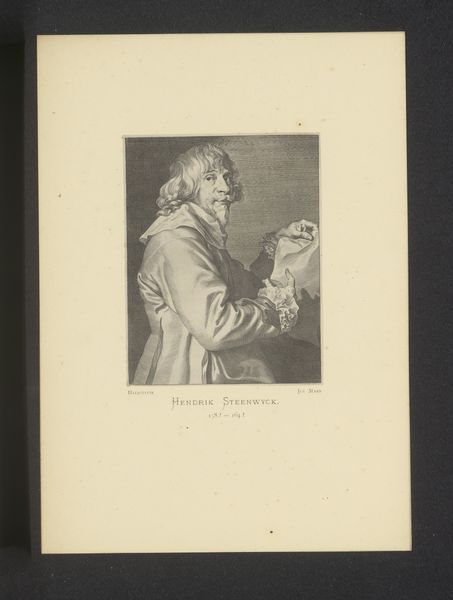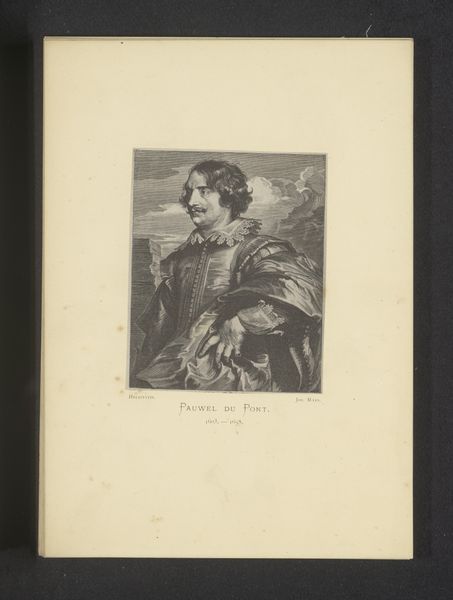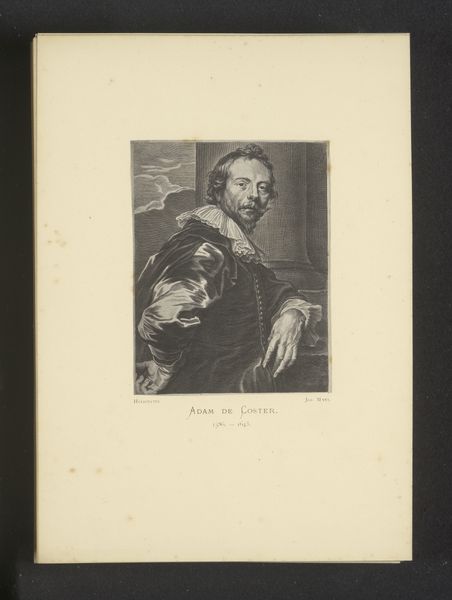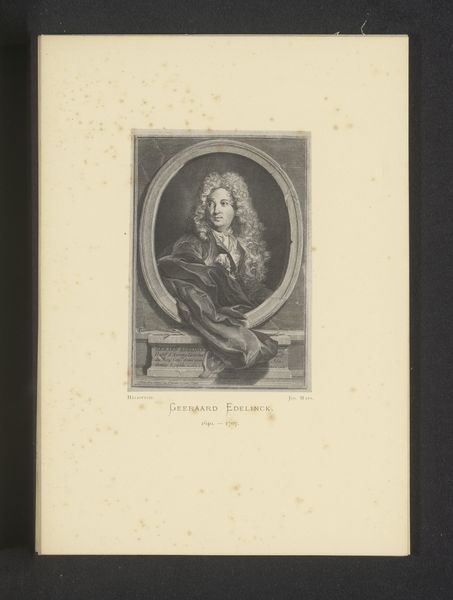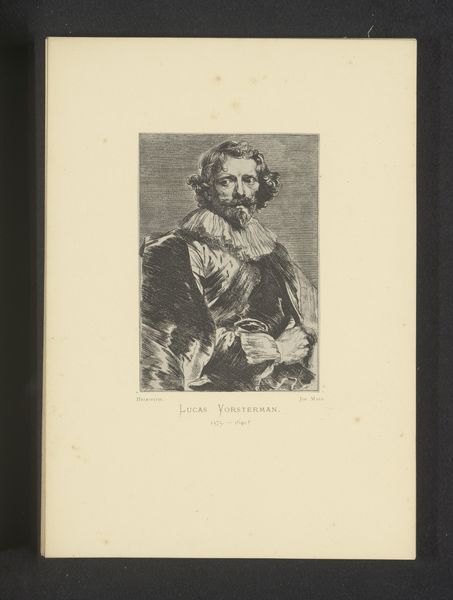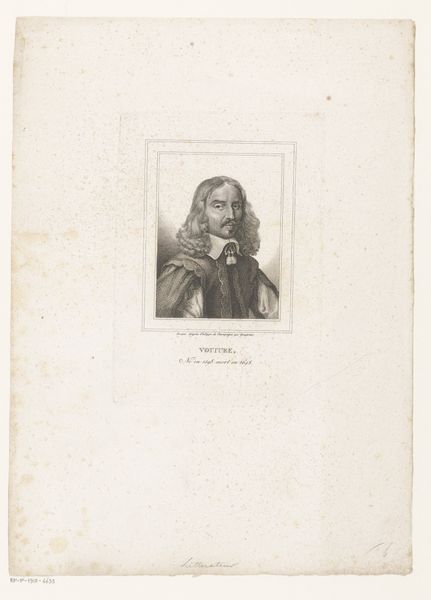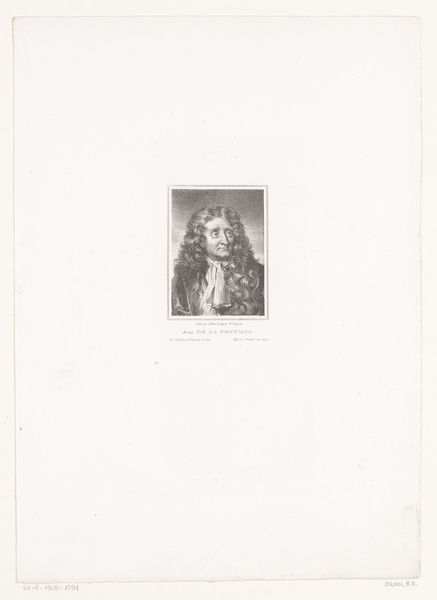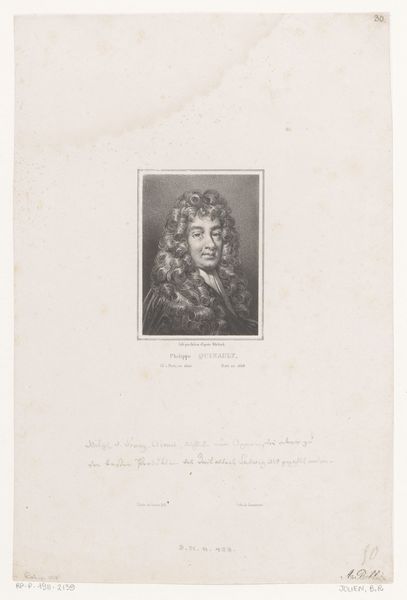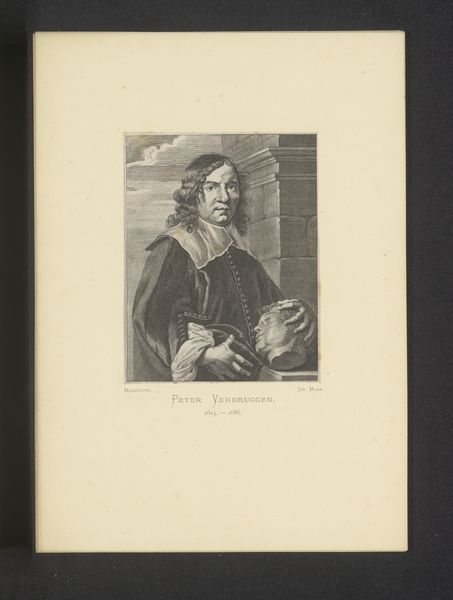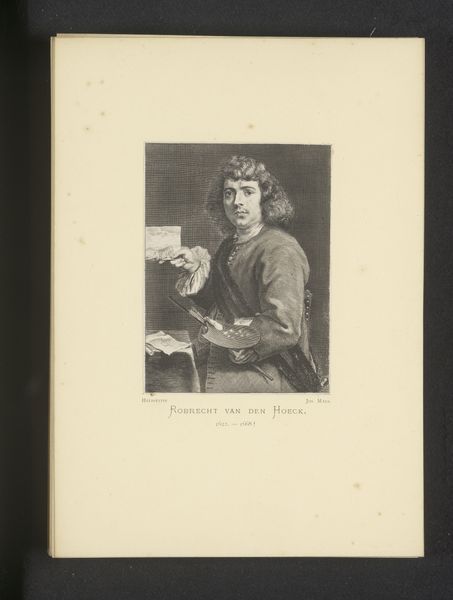
Reproductie van een gravure van een portret van Martin Desjardins door Gerard Edelinck before 1877
0:00
0:00
Dimensions: height 113 mm, width 91 mm
Copyright: Rijks Museum: Open Domain
Curator: The detail in this print is remarkable; I am immediately struck by its sharp contrasts. Editor: Well, yes, it has a distinct clarity, even coldness about it. We're looking at a reproduction of a baroque engraving of Martin Desjardins before 1877, originally engraved by Gerard Edelinck after Joseph Maes. What do you make of the artist's focus on texture and materials? Curator: Texture absolutely defines the work, specifically how light falls across varied surfaces. Consider the soft rendering of Desjardins's wig, distinct from the harsh lines suggesting the drapery behind him. There's also the smooth finish to what looks like a sculpted head resting on his lap. The composition's brilliance is in contrasting those visual elements. Editor: But it's crucial to understand *how* this image came to be. Think of Edelinck as a skilled craftsman translating Maes’ vision through manual labor and immense skill. Engraving was a slow, demanding process, forcing a mediation of the artist’s and engraver's sensibilities through materials and technique. The Baroque aesthetic then elevates this production of luxury through images. Curator: That elevation, though, manifests visually. The figure is framed by architectural details, and draped fabrics evoke a theatrical sense. Formally, these components lend importance and reinforce themes of power. I mean, it fits neatly within visual tropes of the era, drawing influence from earlier portrait traditions, doesn't it? Editor: Sure, the historical portrait style signals power. Yet that is expressed here via material means. For instance, that drapery implies expensive textiles accessible only to the elite, reinforcing existing social hierarchies through consumption. This print, and prints like it, served as currency for propagating the aesthetics of the upper class through material artifacts that helped distribute them. Curator: So it is a symbolic record in itself, more than a record of the actual man, Desjardins. A portrait embodying a range of stylistic influences from past and present, reinterpreting themes of prestige with strong use of chiaroscuro and geometric balance, giving a great weight to his gaze, too. Editor: Absolutely! A copy circulating amongst people wanting to imitate and reflect prestige back onto themselves by reproducing status and propagating the class-based systems and networks on which this hierarchy depended! That’s where true value lies in art such as this!
Comments
No comments
Be the first to comment and join the conversation on the ultimate creative platform.
